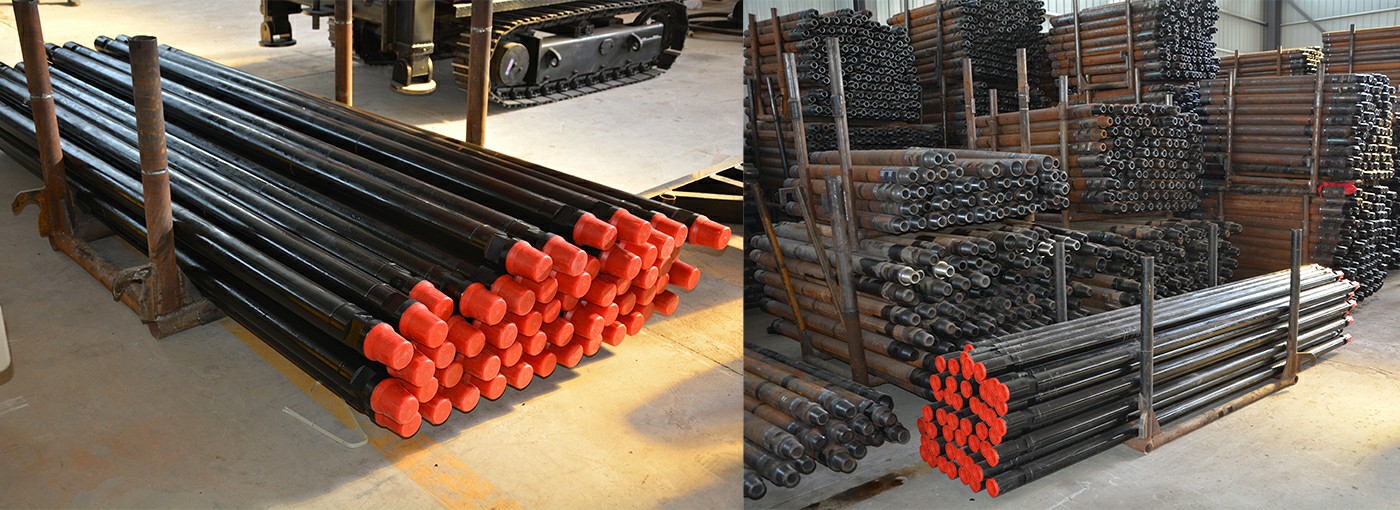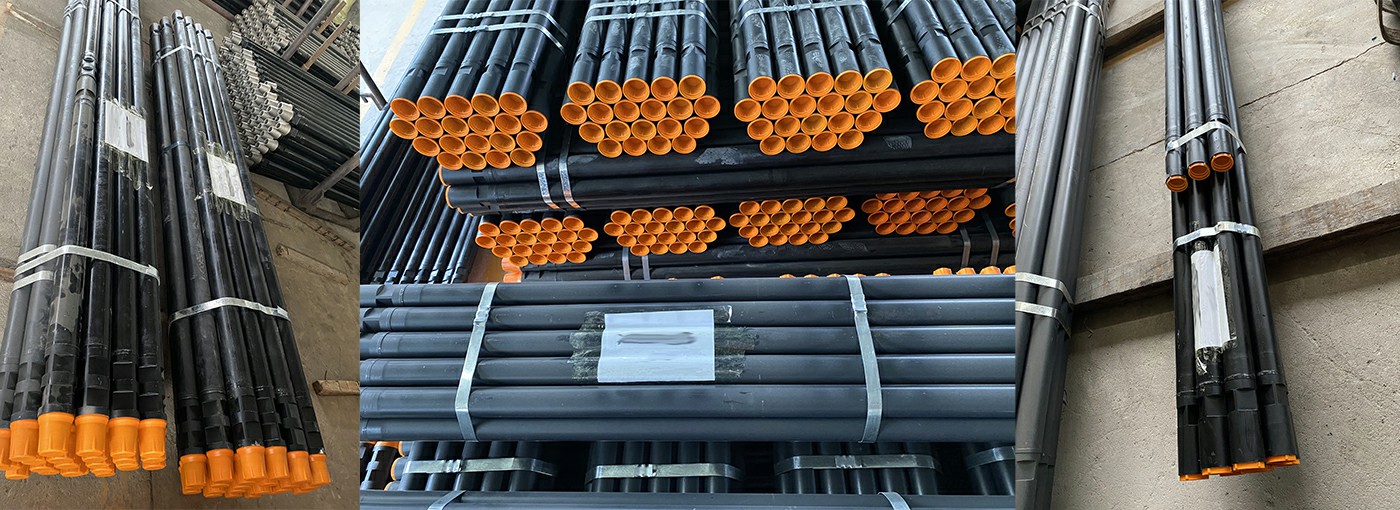Down-the-hole (DTH) drilling and top hammer drilling are two common methods used in the mining, quarrying, and construction industries for drilling holes in rocks and other hard materials. The main difference between them lies in the position of the drilling mechanism and the type of drill pipe used.
1.Down-the-Hole Drill Pipe: Down-the-hole drilling, also known as DTH drilling, involves a drilling mechanism located at the bottom of the drill string. The drill bit is placed at the end of the drill pipe, and a percussion hammer mounted above it delivers powerful blows directly to the bit. The drill bit rotates while simultaneously hammering into the rock, creating a hole.
DTH drill pipes are generally heavier and longer compared to top hammer drill pipes. They are designed to withstand the high impact forces generated by the percussion hammer and the weight of the drill string. DTH drilling is commonly used for larger diameter holes, typically starting from 3 inches (76 mm) and above.
2.Top Hammer Drill Pipe: Top hammer drilling, also known as drifters or rock drills, involves a drilling mechanism located above the drill bit. In this method, a pneumatic or hydraulic-powered hammer is positioned at the top of the drill string, and the percussion force is transmitted down to the bit through the drill pipe. The drill bit rotates while the hammer strikes the top of the bit, producing the drilling action.
Top hammer drill pipes are generally shorter and lighter compared to DTH drill pipes. They are designed for smaller diameter holes, typically ranging from 0.4 inches (10 mm) to 6 inches (152 mm). Top hammer drilling is commonly used for tasks like blast hole drilling, bench drilling, and underground drilling.
In summary, the main difference between down-the-hole drill pipes and top hammer drill pipes lies in the position of the drilling mechanism and the type of drilling action they perform. DTH drilling utilizes a drilling mechanism at the bottom of the drill string and delivers powerful blows directly to the bit, while top hammer drilling has the mechanism above the drill bit and transmits the percussion force down to the bit. The choice between these methods depends on the required hole diameter, drilling conditions, and specific application requirements.

